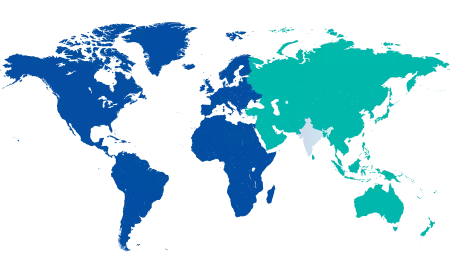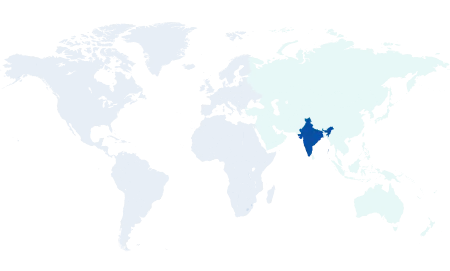-
Book Appointments & Health Checkup Packages
- Access Lab Reports
-
-
Book Appointments & Health Checkup Packages
-
Centre of
Excellence
Centre of Excellence
- Bariatric Surgery - MIBS
- Accident and Emergency Care
- Cardiology
- Cardiothoracic Vascular Surgery
- Diabetes and Endocrinology
- Gastrointestinal Science
- General Surgery
- Laparoscopic Surgery
- Liver Transplantation Surgery
- Nephrology
- Neurology
- Neurosurgery
- Obstetrics and Gynaecology
- Orthopaedics
- Renal Sciences
- Spine Care
- Urology
Other Specialities
- Anesthesiology
- Bariatric Surgery
- Cancer Care
- Dental Medicine
- Dermatology
- Ear Nose Throat
- Fetal Medicine
- Hemato Oncology
- ICU and Critical Care
- Internal Medicine
- Interventional Radiology
- IVF and Infertility
- Laboratory Medicine
- Microbiology
- Neonatology & NICU
- Nocturnal Dialysis
- Nutrition And Dietetics
- Ophthalmology
- Paediatric And Child Care
- Paediatric Surgery
- Pain Medicine
- Pathology
- Pharmacy
- Physiotherapy
- Plastic, Reconstructive And Cosmetic Surgery
- Podiatric Surgery
- Psychiatry
- Pulmonology (Respiratory and Sleep Medicine)
- Radiology
- Reproductive Medicine
- Rheumatology
- Sports Medicine
- Vascular and Endovascular Surgery
Speciality Clinics
- Doctors
- Hebbal
- International Patients



Clinics








- Self Registration
- In-Patient Deposit
- Mars - Ambulance
- Home Care
- Organ Donation
- Corporate & PSU
- Insurance Helpdesk
- Awards And Achievements
- Manipal Insider
- Extended Clinical Arm
- Careers
- Contact Us

Surgical and Non-Surgical Treatment of Intussusception
Surgical and Non-Surgical Treatment of Intussusception in Hebbal, Bangalore
What Is Intussusception?
The most common form of bowel obstruction in infancy and childhood is intussusception where one segment of the intestine telescopes inside of another. This blockage can occur anywhere in the GI (gastrointestinal) tract but usually happens at the junction of the small and large intestines where the small intestine can be inside the large intestine.
Causes and Symptoms
Although the exact cause of intussusception is not known, it occurs mostly in newborns and children. This can be seen in 1 in 1,200 children, mostly in baby boys. The main symptom can be severe abdominal pain with cramps. There might be abdominal pain in your child with painful episodes followed by no painful cramps. This pattern is repeated in children suffering from intussusception and parents should immediately contact their paediatrician specialist for proper diagnosis and treatment. The below-mentioned symptoms can be observed mostly one week after a nonspecific viral illness. The common and possible symptoms of Intussusception might include,
-
Nausea
-
Palpable abdominal mass
-
Currant jelly stool
-
Colicky abdominal pain
-
Vomiting
-
Rectal bleeding sometimes mixed with mucus
Diagnosis
Your paediatrician during surgical and non-surgical treatment of intussusception in Hebbal, Bangalore will conduct proper diagnosis to identify and examine the intussusception and bowel obstruction in the GI tract and also to see whether the intestine has been torn or perforated. The state-of-the-art imaging facilities at the Manipal Hospitals, Hebbal provides unparalleled and accurate imaging test results which help our little paediatric patients to get the proper diagnosis and treatment. Usually, the diagnosis includes the diagnostic ultrasound or ultrasonography, CT scan or X-ray scanning.
These imaging tests are performed on the pregnant mother where the test results show a clear picture of intestinal obstruction in the baby’s intestines. Effective diagnostic ultrasound testing will help in identifying the abdominal mass with 100% accuracy. Other radiological tests such as Barium Enema and Air Contrast Enema are also performed to diagnose Intussusception.
Treatment Procedures for Intussusception
Non-Surgical Treatment Procedure
There are surgical and non-surgical ways to treat the intussusception. The first-line treatment of choice for treating intussusception is the non-surgical way of reduction. This non-surgical procedure involves fewer complications, shorter hospital stay and a high success rate. The non-surgical reduction treatment is the most preferred option compared to the surgical procedure. If the non-surgical treatment and radiologic reduction are unsuccessful, then your child might undergo the surgery. Your paediatrician will discuss the comprehensive treatment plan with you and proceed accordingly.
There are two commonly used non-surgical treatment ways for treating intussusception such as Ultrasound-Guided Hydrostatic Reduction (UGHR) and Fluoroscopy-Guided Air Reduction (FGAR). Your doctor will recommend the most suitable non-surgical way considering the bowel obstruction severity and the baby’s health condition.
Surgical Treatment Procedure
The surgery for treating the intussusception in your baby will be necessary when the intestine is torn or if the non-surgical enema treatment didn’t work. If the intestine is perforated, non-surgical treatment can’t be performed. Usually, this surgery is performed in adults. However, if the intestinal obstruction is severe, surgery is performed on the children. Your child’s paediatric surgeon at Manipal Hospitals will then free the intestinal part that is trapped and clear the blockage. Any dead intestinal tissue will be removed by the surgeon.
Home Hebbal Specialities Paediatric-surgery Surgical-and-non-surgical-treatment-of-intussusception



You’re on Our Indian Website
Visit the Global site for International patient services










